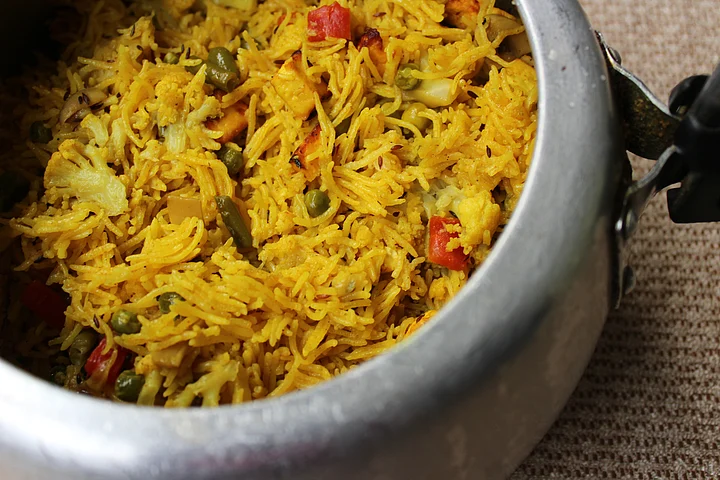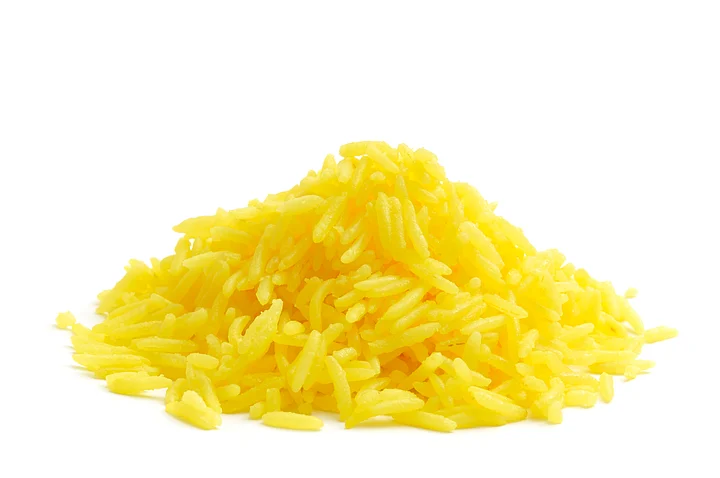When days become longer, cold winds recede, emerald leaves unfurl, yellow mustard blooms dance in fields and mango blossoms, we know the glorious spring season is here.
The festival of Basant Panchami is celebrated on ‘Panchami’ the fifth day of the Magha month according to the Hindu calendar, indicating the arrival of Basant or the spring season in India.
It is celebrated as Sarasvati Puja, based on the mythological belief that the day marks the birth of Sarasvati, the Goddess of Learning. It is also believed to be the day when Lord Brahma created the Universe.
Basant Panchami is an important festival in many regions of India, especially Bihar, Haryana, Punjab, Odisha, Rajasthan, Tripura and West Bengal.
The word ‘Basant’ has two meanings, namely spring season and a yellow hue that dominates the festivities. Wearing yellow clothes and preparing yellow coloured sweets is the tradition.
Regional Festive Platters
In India, the special platters for any occasion are based on Ayurvedic principles. These include local, seasonal produce cooked according to and in harmony with the energy of the festival season.
“According to Ayurveda in Vasant Ritu the vitiation of kapha dosha happens. The digestive power diminishes and people are prone to allergies,” shares Dr. Sugeeta Mutreja, an Ayurvedic doctor, nutritionist and lifestyle coach.
In this season, it is beneficial to consume fresh and easily digestible foods including old grains and pulses like moong, masoor and arhar in the diet, she suggests. Vegetables like parwal, bitter gourd, beans, onions and spices like cumin, coriander turmeric and ginger should also be included.
Bengal
“In Bengal, having Bhog er Khichuri, Labra (a mixed vegetable dish) , accompanied by different types of Bhaja or fries is mandatory for Sarasvati Puja”, says Panchali Sengupta from Kolkata .
Five vegetables are required for Labra. “You can take potatoes, radish, brinjals, beans or any other vegetable. However, including a green vegetable like spinach or Pui saag (Basella or vine spinach) is a must.
“Heat mustard oil, add kalonji, green chillies, chopped vegetables, turmeric and salt. Cover and cook until the oil separates. Then add a pinch of sugar and its done,” shares Panchali.
The Khicuri, consists of yellow mung dal and a special variety of rice -Gobind bhog.

Recipe
“Roast and wash the dal, mix it with washed rice. Heat ghee and Panch Phoron (Five Spice Blend), bay leaves, cloves, cinnamon, green cardamom and dry red chilli. Add fresh peas, the mixture of dal and rice and stir. Add ginger and green chilli paste, turmeric powder and water. When the water starts boiling, add lightly fried cauliflower florets, potato cubes, salt and sugar. Lastly, add Jharna ghee, a special ghee made from cow’s milk available in Bengal. “In fact, our khichuri, isn’t complete without Jharna ghee,” Panchali explains.
There can be no Bengali meal without bhaja or fries. Bhajas can be made from potatoes, brinjals, ladyfinger, pumpkin, cauliflower and pointed gourd (Parwal).
A tangy tomato chutney adds flavour to the spread.
Punjab
For Dr. Aarti Kapur Singh, an independent media professional from Panchkula, Basant Panchami was always an important festival at home. “We would be made to wear yellow clothes and put our pens and books in the 'mandir' at home. The incentive was definitely the lure of better scores but more than that, the amazing bhog of Meethe Chawal and Besan Ke Laddoo.”
Sharing her grandmother’s age-old recipe, she says, “Basmati rice and sugar syrup are the basic ingredients for Meethe Chawal but it is the carefully chosen assortment of Indian spices like green cardamom, cloves, a sliver of bay leaf, cinnamon and kesar that makes it flavourful and aromatic. You can choose to add dry fruits as well - through my naani would add magaz (melon seeds) only.”

Recipe
Rinse and soak ½ cup basmati rice for 20 minutes. Boil the rice with 2 cups of water over medium heat until almost done (90% cooked). Drain the water and keep aside. Heat ghee in a pan on low flame and add bay leaf, cinnamon, cloves and green cardamom, and sauté for 30-40 seconds. Add sugar and 1/4 cup water. Stir and cook till sugar dissolves.
Mix a pinch of saffron and a pinch of cardamom powder in warm water and add to sugar syrup. When this mixture starts boiling, add cooked rice.
Mix gently until each rice grain is coated with sugar-saffron mixture and there are no lumps of white rice. Reduce flame to low and cover it with a lid. Cook until almost all moisture is evaporated, for approx. 5-6 minutes.
Turn off flame and add almonds, cashew nuts, raisins and pistachios. Cover with lid and let it stay for five minutes. Mix well and serve.
Rajasthan
In Rajasthan, Basant Panchami spread consists of two types of rice, sweet and savoury says Sudha Joshi who hails from Sakhun, Rajasthan.
The sweet rice is prepared by cooking it in sugar syrup, adding dry fruits, saffron and cardamom, similar to many other regions.
“The savoury rice is prepared with peas, boiled and steamed besan gatte tempered with whole spices.”

Recipe:
To make the gatte, take 1 cup of gram flour, add 2 tbsp yogurt, 1 tsp oil, a pinch of asafoetida, ¼ tsp carrom seeds, ½ tsp red chilli powder, a pinch of turmeric and salt to taste.
Knead a tight dough and rest it for 15-20 minutes. Make small balls of this dough and make 3- 4 inches long rolls of 1/2 inch diameter.
Heat 4 cups water in a big pan. When the water starts boiling add these rolls and let them cook for 20 minutes. Close the gas and remove the rolls from the water. Cool and cut the rolls into 1/2-inch slices.
Take 3 cups of steamed rice. Heat 1 tbsp oil, add cumin, bay leaf, ¼ tsp coarsely powdered black pepper, a piece of cinnamon, 1 black cardamom, 2 cloves, 2 green chillies cut into pieces, ¼ tsp ginger paste and a pinch of turmeric. Add boiled peas, potato cubes and gatte. sauté for 5 minutes. Add the rice. Cook on medium heat for 2-3 minutes. Remove from heat. Garnish with coriander and garam masala and serve.
(Nupur Roopa is a freelance writer, and a life coach for mothers. She writes articles on environment, food, history, parenting and travel.)
(At The Quint, we are answerable only to our audience. Play an active role in shaping our journalism by becoming a member. Because the truth is worth it.)
